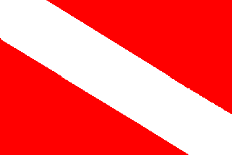Why was it necessary to sign the Barotseland Agreement 1964?
The Agreement was signed in order to allow the two territories (Barotseland Protectorate and the rest of Northern Rhodesia) to proceed to independence as a unitary state and safe guard the autonomy of Barotseland in the new state to be called Zambia. The alternative was to allow each of the territories to proceed to independence separately.
What are the consequences of terminating an international treaty like the Barotseland Agreement 1964 by one of the parties?
The Vienna Convention on the Law of Treaties articles 60 and 70 are very clear on the consequences of terminating an international treaty such that the parties revert to their original positions pertaining before signing the agreement.
Who are the Barotse people?
The Barotse people encompasses all the recognized affiliated tribes resident in the Barotseland territory such as Cokwe,Humbe,Imilangu, Kalanga, Kwamwenyi, Kwandi, Kwandu, Kwangwa, Kwengo, Khwe, Leya, Liyuwa, Lucazi, Lukolwe, Luvale, Luyana, Makoma, Mashi, Mbowe, Mbukushu, Mbumi, Mbunda, Mbwela, Mukulu, Mulonga, Nkoya, Nyengo, Seba, Shanjo, Shasha, Shukulumbwe, Sifwe, Simaa, Subiya, Toka, Totela, Yeyi and Yauma.
What are Barotseland’s borders?
Baroseland borders are based on the territory under its jurisidction between
1900 and 1947. The Eastern boundary stretches from the confluence of the Zambezi river with river Chiababi (longitude 26 degrees East), upwards to Itezhi-Tezhi and along the Kafue river to its confluence with the river Chiababi. The Northern border stretches from the confluence of Lufupa river with river the Kafue, westwards to the Lungwebungu river, (longitude 22 degrees East). The Western boundary starts from Lungwebungu river (Latitude 13 degrees 28 minutes South) then southward to Cuando river, down to the confluence of Cuando with river Luiana, extending to Katima Mulilo Rapids and running along the Zambezi, eastwards to its confluence with river Chiababi (longitude 26 degrees East), the beginning point. Barotseland shall not claim territory that does not belong to it.
In other words, Barotseland lies between the 22nd and 26th parallel on the west and east, and just above the 14th and 18th vertical on the north and south.
What kind of government will Barotseland have?
Barotseland shall have a Constitutional democratic Monarch government with Four spheres–Monarch, Legislature, Executive headed by a Ngambela (Prime Minister) and Judiciary.
How will Barotseland survive economically?
Barotseland is well endowed with resources ranging from a rich cultural heritage, abundant water, arable land, fish, cattle, rice, cashew, mangoes, timber, wildlife, tourism to natural and mineral resources—including possibly gas, oil, coal, iron, copper, uranium and diamonds. These resources have remained unexploited, largely as a result of Zambia’s illegal administration of Barotseland following the 1969 unilateral abrogation of the Barotseland Agreement of 1964, and the subsequent unwritten policy by successive Zambian governments to keep the territory in perpetual economic servitude. Actualization of Barotseland statehood will provide employment opportunities for the people of Barotseland in all sectors of the economy in both the public and private sectors.
I’m a Barotse person living in Northern Rhodesia – will I lose everything when I move to my country?
No. You do not lose anything. Barotse nationals are free to invest in any country of their choice, including the remains of Zambia or Northern Rhodesia or what ever name the remaining territory will call itself.
How can I help?
You can help in various ways including making donation using the link above, volunteering in any of the activities being undertaken by BNFA or any member organization and playing advocacy role in support of BNFA mission in Barotseland or Diaspora (including in the remaining territory of Zambia).


